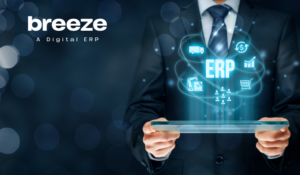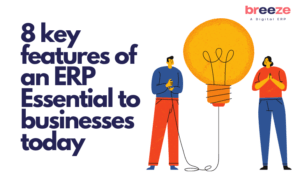In early 2019 Indian SME and MSME entrepreneurs were the most optimistic globally about growing their business by at least 50% in the next 3 to 5 years. As we stepped into the 2nd quarter of 2019, with the chaos and breakdowns unleashed by the pandemic, the future of these businesses seemed unpredictable. However, this also forced many small business owners to run their businesses in a more lean and efficient manner, leading to a permanent shift in their operating landscape and increasing the demand for digital adoption. Small businesses are already developing a new set of skills along with the ability to be more robust, swift, and flexible.
As observed in the early part of this decade, majority of Indian SME businesses have been fairly reluctant to technology adaptation largely due to lack of trust and poor quality products flooded in the market. However, in the last two years, with right awareness and access (largely due to internet penetration to tier 2 and 3 cities) there has been an increase in intent for more futuristic solutions like cloud technology, barcode integrations, salesman tracking, GPS tracking, mobile applications and so on.
As we step into a new year and a new decade, let’s have a look at the trends that are expected to drive business growth in 2021.
Cloud Adoption
More and more companies are opting for cloud ERP solutions. You always have the latest version of the software, you pay for what you need, it is easy to expand and it is easy to integrate with other applications. ERP in the cloud takes away a lot of worries for SMEs. And many of the objections to cloud do not stand ground nowadays. The performance of cloud solutions is excellent, data security is also well organized (even better than on-premise) and it is not necessarily more expensive than on-premise. It is therefore expected that more companies will have their ERP solution in the cloud by 2021.
Automations & AI
An ERP system with artificial intelligence features enables companies to automate their complex business processes through intelligent data processing methods. With the enormous amount of data being collected by SME & MSME businesses all the time it needs to find ways to analyze this data and extract value out of it. In such instances, AI-driven ERP systems can be used for data mining and big data analytics. They can create workflows, reduce errors, lessen information loading time, and more.
Mobile Devices
Complete mobile support will be among the basic functionalities of a modern ERP tool. Apart from providing on-the-go access to data, the mobile approach in ERP brings a plethora of benefits. One of the obvious capabilities is to perform business operations anytime and anywhere. It means that both back-end and front-end activities are available on mobile devices such as smartphones and tablets.
Dashboards & Visualisations
We absorb visual information much easier and faster than text and numbers. And we also remember it much better. Where legacy ERP systems contain extensive menus with many fields, text and figures, this is changing. Modern ERPs have clear, user-friendly menus with dashboards, icons, graphs and overviews. Better UX has proven effective when it comes to quickly finding information that enhances decision-making.
ERP for Niche
All businesses operate uniquely and a generic ERP system will not meet the requirements any more. There is a growing demand for niche solutions; ERP systems that are only intended for a specific industry.
This niche ERP contains the specific features and functionalities required for companies operating in this niche market. It also gives the vendor a consultative edge having industry-specific knowledge. This further increases the trust of the SME on the ERP as it can provide excellent assistance when optimizing business processes and in realizing business ambitions, now and in the future.
A Business Optimisation Solution not just an ERP
Where ERP has traditionally been a stand-alone application, it is now becoming the most important software system of the organization. To provide the expected intelligence for business development of the organisation the ERP needs to be integrated with all the ancillary business tools like warehouse management, CRM, track & trace or transportation. In 2021, companies looking for a new ERP system will not only focus on the system itself, but also look at how the ERP system fits within the rest of the IT infrastructure.
Future ERP trends indicate that we will see buyers move to the cloud as vendors offer personalized solutions with continuous updates along with adaptation of new technologies like AI and IoT to edge ahead of their competitors.
Breeze is an ERP solution that provides end-to-end ERP software development services to address varied business requirements of our clients. It integrates your systems and syncs all your business processes into a single operation unit giving a clear visibility and control over your organisation and recognises opportunities to improve through intuitive reporting.
BreezeERP includes integrated functionality for financial management, sales, Project management, distribution, inventory, and business intelligence.
It is web-based, browser agnostic, and responsive on mobile devices.
Our ERP development services bridge the gap between all the important business functions and bring them under a centrally-managed software platform. For any queries, drop us a line at info@breezeerp.in or click here.



